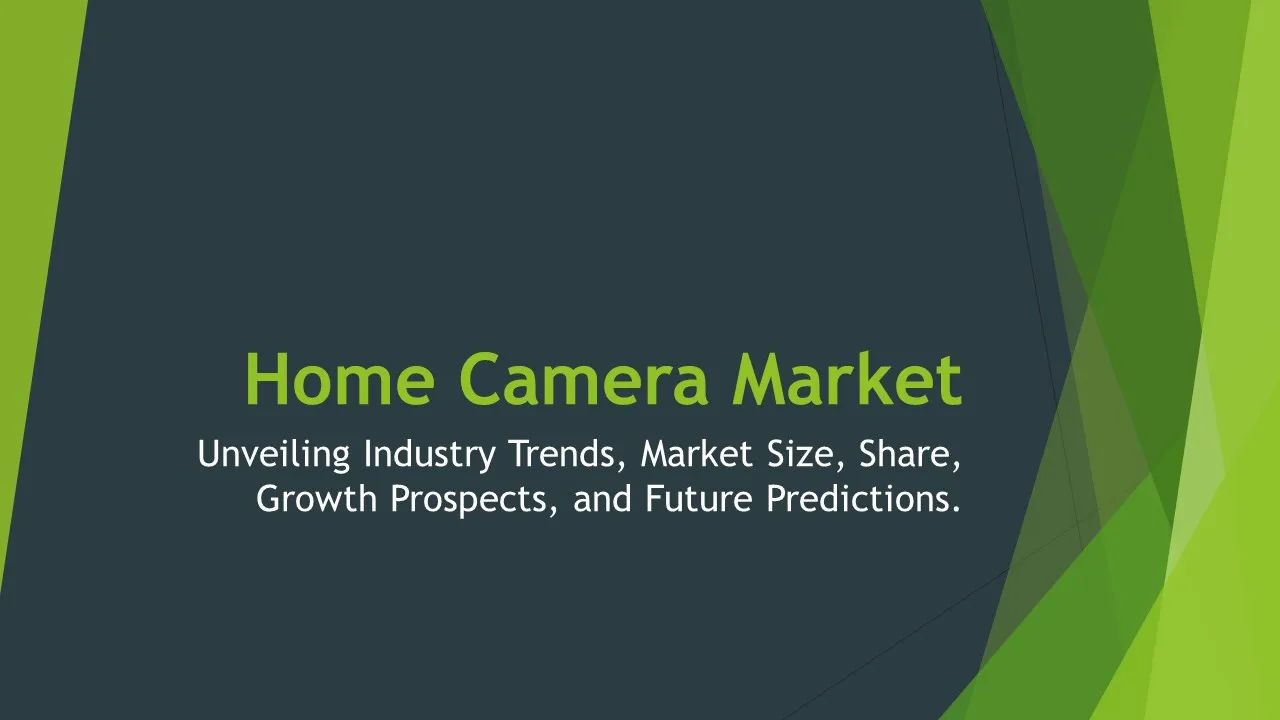Controlled Intelligent Packaging Sales
Controlled Intelligent Packaging Market Segments - by Product Type (Active Packaging, Intelligent Packaging, Modified Atmosphere Packaging, Antimicrobial Packaging, Smart Labels), Application (Food & Beverages, Healthcare, Pharmaceuticals, Personal Care, Others), Distribution Channel (Online Stores, Supermarkets/Hypermarkets, Specialty Stores, Others), Technology (QR Codes, RFID, NFC, Bluetooth, Sensors), and Region (North America, Europe, Asia Pacific, Latin America, Middle East & Africa) - Global Industry Analysis, Growth, Share, Size, Trends, and Forecast 2025-2035
- Report Preview
- Table Of Content
- Segments
- Methodology
Controlled Intelligent Packaging Sales Market Outlook
The global Controlled Intelligent Packaging market is projected to reach approximately USD 25 billion by 2035, growing at a compound annual growth rate (CAGR) of around 10% during the forecast period from 2025 to 2035. This growth is primarily driven by the increasing demand for innovative solutions that enhance the shelf life and safety of products, especially in the food and beverage sector, as well as rising health consciousness among consumers. Additionally, the proliferation of smart technologies and the growing trend of IoT (Internet of Things) integration in packaging solutions are further propelling the market forward. Consumer awareness regarding sustainable packaging is also contributing to the growth, as manufacturers adopt eco-friendly materials and intelligent packaging solutions. As a result, investment in research and development is on the rise, fostering new product innovations that align with evolving consumer preferences.
Growth Factor of the Market
One of the main growth factors for the Controlled Intelligent Packaging market is the increasing consumer demand for fresh and safe products. The rise in disposable income and changing lifestyles are leading consumers to prioritize premium and convenient products that maintain their quality over time. Moreover, advancements in technology, such as the integration of sensors and smart labels, are significantly enhancing the functionality of packaging solutions. These innovations enable real-time monitoring of product conditions, ensuring optimal storage and handling, which is vital in sectors such as food and pharmaceuticals. Furthermore, regulatory pressures regarding food safety and environmental sustainability are pushing companies to adopt intelligent packaging solutions that comply with new standards. The growing e-commerce sector also plays a vital role, as businesses seek efficient packaging options for shipping perishable goods.
Key Highlights of the Market
- The market is expected to witness a significant CAGR of 10% from 2025 to 2035.
- Active packaging segment is predicted to lead the market, accounting for a substantial share due to its ability to extend shelf life.
- Technological advancements in sensors and smart labels are revolutionizing packaging solutions.
- Healthcare and pharmaceuticals applications are increasingly utilizing intelligent packaging for better product monitoring.
- North America is anticipated to hold the largest market share, fueled by high consumer awareness and regulatory standards.
By Product Type
Active Packaging:
Active packaging is a segment that plays a crucial role in enhancing the shelf life of products by actively interacting with the environment. This type of packaging can release or absorb substances such as gases and moisture, helping to maintain the quality and safety of food and other perishable goods. Innovations in this space have led to the development of materials that can respond to changes in temperature, humidity, and light, thereby extending the product's freshness. The increasing demand for convenience foods is expected to further drive the growth of active packaging solutions, as consumers seek packaging that preserves taste and texture. Additionally, the food industry is increasingly adopting these technologies to reduce food waste, making active packaging a pivotal component of sustainable practices.
Intelligent Packaging:
Intelligent packaging refers to packaging systems that enhance the communication of product information through technology. This includes the use of indicators, sensors, and data-logging devices that provide real-time updates about the condition of the product. The rising consumer expectation for transparency and detailed information regarding food safety and quality is driving the demand for intelligent packaging solutions. Companies are utilizing intelligent packaging to provide consumers with crucial information, including freshness indicators and temperature monitoring, which are vital for food and pharmaceutical products. The growing trend towards smart packaging is also evident in the personal care industry, where brands are using technology to enhance consumer engagement and brand loyalty. As more companies recognize the advantages of intelligent packaging, its adoption is expected to increase in various sectors.
Modified Atmosphere Packaging:
Modified Atmosphere Packaging (MAP) is a technology that alters the composition of the internal atmosphere of a package to enhance the shelf life of perishable products. The MAP process typically involves replacing the air inside a package with a gas mixture that slows down the growth of pathogens and spoilage organisms. This technology is particularly popular in the food sector, especially for products like fruits, vegetables, and meat, as it helps maintain freshness and reduce waste. The increased focus on food safety and quality is propelling the adoption of MAP, as consumers seek products that have a longer shelf life without compromising nutritional value. Additionally, as retailers aim to reduce food waste, MAP solutions are becoming essential for effective inventory management.
Antimicrobial Packaging:
Antimicrobial packaging incorporates agents that inhibit the growth of bacteria and fungi, thus extending the shelf life of products significantly. This type of packaging is particularly important in the food and healthcare industries, where the risk of contamination can have serious implications. As foodborne illnesses continue to be a concern, the demand for antimicrobial packaging is on the rise. Companies are investing in research to develop new antimicrobial materials that are effective yet safe for consumer use. The healthcare sector is also utilizing antimicrobial packaging for sterile products, ensuring that they remain uncontaminated during transport and storage. With the increasing emphasis on health and safety, the antimicrobial packaging segment is expected to witness robust growth.
Smart Labels:
Smart labels are innovative solutions that provide additional information about the product via electronic means. These labels often incorporate QR codes, RFID tags, or NFC technology that can be scanned by consumers with smartphones or other devices to access detailed product information, including origin, nutritional facts, and usage instructions. The growing trend towards transparency and consumer empowerment is driving the demand for smart labels, as brands seek to engage customers and enhance their shopping experience. Furthermore, these labels can also include tracking and inventory management features that are beneficial for retailers. As technology continues to evolve, the scope of smart labels is expanding, paving the way for more interactive and informative packaging solutions.
By Application
Food & Beverages:
The food and beverages sector is the largest application area for controlled intelligent packaging, driven by the increasing demand for freshness and safety. Packaging solutions that extend shelf life and provide real-time information about product conditions are becoming essential in this industry. Consumers are now more aware of food safety and quality, leading to a significant demand for innovative packaging that can ensure the preservation of taste and nutritional value. Moreover, with the rise of online grocery shopping, there is a growing need for packaging solutions that can maintain product integrity during transit. Consequently, companies are investing in active and intelligent packaging technologies to meet consumer expectations while reducing food waste and spoilage.
Healthcare:
The healthcare sector is increasingly adopting controlled intelligent packaging solutions to enhance product safety and efficacy. Packaging that provides clear information about drug expiration dates, storage conditions, and usage instructions is crucial in ensuring patient safety. Additionally, intelligent packaging technologies such as temperature monitoring and active barriers are being implemented to preserve the integrity of pharmaceutical products. As the global pharmaceutical market continues to expand, the demand for reliable and effective packaging solutions is expected to grow significantly. Furthermore, regulatory requirements regarding drug safety are pushing manufacturers towards adopting advanced packaging technologies that can provide real-time monitoring and compliance assurance.
Pharmaceuticals:
In the pharmaceuticals application, controlled intelligent packaging is instrumental in ensuring the safety and effectiveness of medications. With the complexity of drug formulations and the need for adherence to stringent regulations, packaging must meet high-quality standards. Intelligent packaging technologies such as tamper-evident seals and anti-counterfeiting measures are crucial for protecting pharmaceutical products. Additionally, the use of active packaging that maintains appropriate environmental conditions can significantly enhance the shelf life of sensitive medications. As the global demand for pharmaceutical products increases, driven by an aging population and rising health issues, the role of intelligent packaging in this sector is becoming more critical.
Personal Care:
The personal care industry is experiencing a growing interest in controlled intelligent packaging solutions as brands seek to differentiate their products in a highly competitive market. Packaging that offers enhanced user experience—such as resealable containers, dosage indicators, and information on product freshness—is becoming increasingly popular. Moreover, the trend towards sustainability has led many personal care brands to seek eco-friendly packaging solutions that align with consumer values. Intelligent packaging technologies not only enhance the functionality of personal care products but also provide brands with the opportunity to engage directly with consumers through interactive labels and promotions. This growing trend is expected to propel the demand for innovative packaging solutions in the personal care market.
Others:
The 'Others' category encompasses a variety of applications, including electronics, home care, and automotive products. As industries converge and consumer expectations evolve, there is a rising need for packaging that is not only functional but also informative. For example, the electronics sector has begun to adopt smart packaging technologies that assist in inventory management and product identification, improving overall efficiency in logistics. Similarly, home care products are leveraging intelligent packaging to enhance user experience and provide additional information on usage and safety. The diversification of applications for controlled intelligent packaging is indicative of the growing recognition of its benefits across various sectors, further fueling market expansion.
By Distribution Channel
Online Stores:
The rise of e-commerce has dramatically transformed the distribution landscape, making online stores a vital channel for controlled intelligent packaging solutions. Consumers increasingly prefer the convenience of shopping online, leading to a surge in demand for packaging that ensures the safe transport of perishable and sensitive products. Packaging that incorporates smart features, such as temperature control and monitoring, is becoming essential for ensuring product integrity during delivery. With the ongoing trend of rising online shopping, manufacturers are investing in more robust and intelligent packaging solutions that can withstand logistics challenges while ensuring customer satisfaction.
Supermarkets/Hypermarkets:
Supermarkets and hypermarkets remain a dominant distribution channel for controlled intelligent packaging, as they serve as one-stop shops for consumers seeking fresh and high-quality products. Retailers are increasingly prioritizing packaging solutions that enhance product shelf life and ensure safety, as these factors significantly influence purchase decisions. The demand for packaged food products is consistently rising, prompting supermarkets to adopt innovative packaging technologies that appeal to health-conscious consumers. Additionally, the competitive nature of the supermarket sector has led to a focus on product differentiation, where intelligent packaging plays a crucial role in attracting consumers and enhancing brand loyalty.
Specialty Stores:
Specialty stores, which focus on niche markets and high-end products, are also adopting controlled intelligent packaging solutions to better cater to their discerning customer base. These stores often emphasize quality and unique selling points, making intelligent packaging an essential aspect of their value proposition. Packaging that provides detailed information about product origins, ingredients, and freshness is crucial for instilling consumer confidence, especially in gourmet food, organic products, and specialty health items. As specialty stores continue to grow in popularity, the demand for innovative and intelligent packaging solutions that enhance customer experience is expected to rise, further contributing to market growth.
Others:
The 'Others' category for distribution channels includes various formats such as convenience stores, vending machines, and direct-to-consumer shipments. As consumer preferences evolve, these channels are increasingly looking for packaging solutions that are not only practical but also provide added value, such as convenience and informational features. For instance, convenience stores often cater to on-the-go consumers who prioritize ease of use and product accessibility, making intelligent packaging a valuable asset. Similarly, vending machines are incorporating smart technologies to improve customer interaction and product turnover. The dynamic nature of these channels indicates a growing recognition of the importance of controlled intelligent packaging across various retail formats, further driving market expansion.
By Technology
QR Codes:
QR codes have emerged as a popular technology in controlled intelligent packaging, enabling consumers to access detailed product information with a simple scan. This technology enhances consumer engagement by providing insights into product origins, nutritional content, and usage instructions. The increasing prevalence of smartphones has facilitated the adoption of QR codes, making them a key component in modern packaging strategies. Brands leverage QR codes not only to convey important information but also to enhance marketing efforts through promotional offers and loyalty programs. As consumer demand for transparency grows, the implementation of QR codes in packaging is expected to rise, driving market growth.
RFID:
Radio Frequency Identification (RFID) technology is revolutionizing the controlled intelligent packaging landscape by offering enhanced tracking and inventory management capabilities. RFID tags can be embedded in packaging to provide real-time information about product location, condition, and authenticity. This technology is particularly beneficial in the supply chain, as it enables manufacturers and retailers to monitor inventory levels accurately and reduce losses due to spoilage. The growing need for efficient logistics and inventory management is driving the adoption of RFID technology in packaging, especially in sectors such as food, pharmaceuticals, and retail. As the technology continues to evolve, RFID is set to play a pivotal role in enhancing packaging efficiency and safety.
NFC:
NFC (Near Field Communication) technology is gaining traction in controlled intelligent packaging, allowing consumers to connect with products instantly by tapping their smartphones. This technology enables seamless communication between the packaging and the consumer’s device, providing easy access to product information, promotions, and brand interactions. NFC technology enhances the overall consumer experience by facilitating quick access to valuable information without the need for scanning or internet access. As brands seek innovative ways to engage consumers and enhance loyalty, the adoption of NFC technology in packaging is expected to grow, contributing to market expansion.
Bluetooth:
Bluetooth technology is being utilized in controlled intelligent packaging to create more interactive consumer experiences. By integrating Bluetooth-enabled devices within packaging, brands can provide real-time updates on product conditions and engage customers through tailored marketing messages. This technology is particularly valuable in sectors like food and beverages, where real-time temperature and freshness monitoring can be crucial. The convenience offered by Bluetooth technology enhances customer satisfaction and provides brands with valuable data regarding consumer interactions. As technology advances and consumer expectations evolve, the role of Bluetooth in intelligent packaging is anticipated to increase, further driving market growth.
Sensors:
Sensors are at the forefront of the controlled intelligent packaging revolution, offering the capability to monitor various environmental conditions such as temperature, humidity, and gas levels. These technologies play a crucial role in maintaining product quality and safety, especially in sensitive products like food and pharmaceuticals. By providing real-time data, sensors enable manufacturers to take proactive measures in managing product conditions throughout the supply chain. The growing emphasis on food safety and quality assurance is propelling the demand for sensor-integrated packaging solutions, as consumers become more aware of the importance of fresh and safe products. As advancements in sensor technology continue, their application in controlled intelligent packaging is expected to expand significantly.
By Region
North America is projected to dominate the Controlled Intelligent Packaging market, accounting for approximately 35% of the total market share by 2035. This is primarily driven by stringent regulations regarding food safety, a well-established retail infrastructure, and high consumer awareness regarding the importance of intelligent packaging solutions. The region's advanced technological landscape and investment in research and development are also contributing to the growth of innovative packaging solutions. Moreover, the increasing popularity of e-commerce and online grocery shopping is prompting companies to adopt smarter packaging technologies that can meet consumer expectations for product safety and integrity during transit. As the market continues to evolve, North America is expected to remain a key player in driving advancements in controlled intelligent packaging.
Europe is expected to hold the second-largest market share, driven by factors such as increasing consumer demand for sustainable packaging and innovations in food safety. The European market has been focusing on reducing food waste and enhancing product shelf life, which is leading to a surge in the adoption of controlled intelligent packaging solutions. Countries such as Germany, France, and the UK are at the forefront of adopting intelligent packaging technologies, promoting initiatives that align with environmental sustainability. Furthermore, the presence of extensive retail networks and the growing trend of health-conscious consumers are expected to propel the market. The region's growth is also reflected in the CAGR forecast, which is projected at around 9% during the same period.
Opportunities
The Controlled Intelligent Packaging market presents numerous opportunities for growth, particularly in emerging economies where consumer awareness regarding food safety and quality is on the rise. As the middle class expands in countries such as India and Brazil, there is an increasing demand for convenience foods and packaged goods that meet modern consumer needs. Companies that can innovate and provide intelligent packaging solutions tailored to local preferences will find significant opportunities to capture market share. Additionally, the growing trend of e-commerce in these regions opens new avenues for businesses to reach consumers directly, increasing the demand for robust packaging solutions that ensure product integrity during shipping. Investing in regional markets and adapting strategies to cater to local demands can lead to substantial growth potential in the coming years.
Another promising opportunity lies in the integration of sustainable practices within the controlled intelligent packaging sector. As consumers become more environmentally conscious, there is a growing demand for packaging solutions that are not only functional but also eco-friendly. Companies can capitalize on this trend by developing biodegradable materials and sustainable packaging practices that minimize environmental impact. Moreover, collaborating with suppliers and retailers who prioritize sustainability can enhance brand reputation and attract a broader customer base. As the industry shifts towards more sustainable approaches, businesses that invest in eco-friendly packaging innovations will be well-positioned to thrive in the evolving market landscape.
Threats
Despite the growth potential, the Controlled Intelligent Packaging market faces several threats that could impede progress. One significant challenge is the high costs associated with developing and implementing advanced packaging technologies. Smaller companies may struggle to invest in the necessary infrastructure and technology to compete effectively with larger, well-established players. Additionally, as the market becomes increasingly competitive, the pressure to reduce prices and offer lower-cost solutions may compromise the quality of packaging, ultimately affecting product safety. The rapid pace of technological advancements also poses a threat, as companies must continuously adapt to keep up with evolving consumer expectations and preferences. Failure to innovate and implement the latest technologies could result in lost market share and reduced competitiveness.
Another potential threat is the increasing regulatory scrutiny surrounding packaging materials and safety standards. Governments worldwide are implementing stricter regulations aimed at addressing environmental concerns and ensuring consumer safety, which can create challenges for manufacturers. Compliance with these regulations often requires significant investments in research, development, and testing, which could be particularly burdensome for smaller companies. Additionally, the global supply chain disruptions caused by events such as pandemics or geopolitical tensions can affect the availability and cost of raw materials necessary for intelligent packaging production. These challenges highlight the need for companies to remain agile and adaptable to navigate the complexities of the market landscape successfully.
Competitor Outlook
- Amcor PLC
- Sealed Air Corporation
- Smurfit Kappa Group
- BASF SE
- WestRock Company
- Sonoco Products Company
- Sonoco Products Company
- Berry Global, Inc.
- Quad/Graphics, Inc.
- Mondi Group
- Constantia Flexibles
- Diversey Holdings, Ltd.
- International Paper Company
- Huhtamaki Group
- R.R. Donnelley & Sons Company
The competitive landscape of the Controlled Intelligent Packaging market is characterized by the presence of several established players and a growing number of new entrants. Companies are increasingly focusing on innovation and technological advancements to differentiate themselves in a crowded market. Investment in research and development is a significant trend, with companies striving to create more effective and sustainable packaging solutions. Collaborations and partnerships between packaging manufacturers and technology providers are also becoming common as organizations seek to leverage each other's expertise to enhance product offerings. Furthermore, mergers and acquisitions within the industry are expected to continue, as companies look to expand their product portfolios and enhance their market presence.
Amcor PLC, a global leader in packaging solutions, has been at the forefront of the controlled intelligent packaging market, offering a diverse range of innovative products designed to enhance food safety and quality. The company's commitment to sustainability is evident in its ongoing efforts to develop eco-friendly packaging solutions that meet consumer demands. Amcor’s investments in technology and smart packaging solutions have positioned it as a key player in the market. With a strong global presence and extensive experience in the packaging sector, Amcor is well-equipped to capitalize on new growth opportunities in the controlled intelligent packaging space.
Meanwhile, Sealed Air Corporation is known for its innovative approaches to packaging, particularly in the food and healthcare sectors. The company is focused on developing intelligent packaging solutions that improve product safety and reduce waste. Sealed Air's diverse product offerings, including active and smart packaging, allow it to cater to various industries effectively. The company's commitment to sustainability and reducing the environmental impact of packaging is also a significant aspect of its competitive strategy. With a strong emphasis on customer collaboration and innovation, Sealed Air remains a formidable player in the controlled intelligent packaging market.
1 Appendix
- 1.1 List of Tables
- 1.2 List of Figures
2 Introduction
- 2.1 Market Definition
- 2.2 Scope of the Report
- 2.3 Study Assumptions
- 2.4 Base Currency & Forecast Periods
3 Market Dynamics
- 3.1 Market Growth Factors
- 3.2 Economic & Global Events
- 3.3 Innovation Trends
- 3.4 Supply Chain Analysis
4 Consumer Behavior
- 4.1 Market Trends
- 4.2 Pricing Analysis
- 4.3 Buyer Insights
5 Key Player Profiles
- 5.1 BASF SE
- 5.1.1 Business Overview
- 5.1.2 Products & Services
- 5.1.3 Financials
- 5.1.4 Recent Developments
- 5.1.5 SWOT Analysis
- 5.2 Amcor PLC
- 5.2.1 Business Overview
- 5.2.2 Products & Services
- 5.2.3 Financials
- 5.2.4 Recent Developments
- 5.2.5 SWOT Analysis
- 5.3 Mondi Group
- 5.3.1 Business Overview
- 5.3.2 Products & Services
- 5.3.3 Financials
- 5.3.4 Recent Developments
- 5.3.5 SWOT Analysis
- 5.4 Huhtamaki Group
- 5.4.1 Business Overview
- 5.4.2 Products & Services
- 5.4.3 Financials
- 5.4.4 Recent Developments
- 5.4.5 SWOT Analysis
- 5.5 WestRock Company
- 5.5.1 Business Overview
- 5.5.2 Products & Services
- 5.5.3 Financials
- 5.5.4 Recent Developments
- 5.5.5 SWOT Analysis
- 5.6 Berry Global, Inc.
- 5.6.1 Business Overview
- 5.6.2 Products & Services
- 5.6.3 Financials
- 5.6.4 Recent Developments
- 5.6.5 SWOT Analysis
- 5.7 Quad/Graphics, Inc.
- 5.7.1 Business Overview
- 5.7.2 Products & Services
- 5.7.3 Financials
- 5.7.4 Recent Developments
- 5.7.5 SWOT Analysis
- 5.8 Smurfit Kappa Group
- 5.8.1 Business Overview
- 5.8.2 Products & Services
- 5.8.3 Financials
- 5.8.4 Recent Developments
- 5.8.5 SWOT Analysis
- 5.9 Constantia Flexibles
- 5.9.1 Business Overview
- 5.9.2 Products & Services
- 5.9.3 Financials
- 5.9.4 Recent Developments
- 5.9.5 SWOT Analysis
- 5.10 Sealed Air Corporation
- 5.10.1 Business Overview
- 5.10.2 Products & Services
- 5.10.3 Financials
- 5.10.4 Recent Developments
- 5.10.5 SWOT Analysis
- 5.11 Diversey Holdings, Ltd.
- 5.11.1 Business Overview
- 5.11.2 Products & Services
- 5.11.3 Financials
- 5.11.4 Recent Developments
- 5.11.5 SWOT Analysis
- 5.12 Sonoco Products Company
- 5.12.1 Business Overview
- 5.12.2 Products & Services
- 5.12.3 Financials
- 5.12.4 Recent Developments
- 5.12.5 SWOT Analysis
- 5.13 International Paper Company
- 5.13.1 Business Overview
- 5.13.2 Products & Services
- 5.13.3 Financials
- 5.13.4 Recent Developments
- 5.13.5 SWOT Analysis
- 5.14 R.R. Donnelley & Sons Company
- 5.14.1 Business Overview
- 5.14.2 Products & Services
- 5.14.3 Financials
- 5.14.4 Recent Developments
- 5.14.5 SWOT Analysis
- 5.1 BASF SE
6 Market Segmentation
- 6.1 Controlled Intelligent Packaging Sales Market, By Technology
- 6.1.1 QR Codes
- 6.1.2 RFID
- 6.1.3 NFC
- 6.1.4 Bluetooth
- 6.1.5 Sensors
- 6.2 Controlled Intelligent Packaging Sales Market, By Application
- 6.2.1 Food & Beverages
- 6.2.2 Healthcare
- 6.2.3 Pharmaceuticals
- 6.2.4 Personal Care
- 6.2.5 Others
- 6.3 Controlled Intelligent Packaging Sales Market, By Product Type
- 6.3.1 Active Packaging
- 6.3.2 Intelligent Packaging
- 6.3.3 Modified Atmosphere Packaging
- 6.3.4 Antimicrobial Packaging
- 6.3.5 Smart Labels
- 6.4 Controlled Intelligent Packaging Sales Market, By Distribution Channel
- 6.4.1 Online Stores
- 6.4.2 Supermarkets/Hypermarkets
- 6.4.3 Specialty Stores
- 6.4.4 Others
- 6.1 Controlled Intelligent Packaging Sales Market, By Technology
7 Competitive Analysis
- 7.1 Key Player Comparison
- 7.2 Market Share Analysis
- 7.3 Investment Trends
- 7.4 SWOT Analysis
8 Research Methodology
- 8.1 Analysis Design
- 8.2 Research Phases
- 8.3 Study Timeline
9 Future Market Outlook
- 9.1 Growth Forecast
- 9.2 Market Evolution
10 Geographical Overview
- 10.1 Europe - Market Analysis
- 10.1.1 By Country
- 10.1.1.1 UK
- 10.1.1.2 France
- 10.1.1.3 Germany
- 10.1.1.4 Spain
- 10.1.1.5 Italy
- 10.1.1 By Country
- 10.2 Asia Pacific - Market Analysis
- 10.2.1 By Country
- 10.2.1.1 India
- 10.2.1.2 China
- 10.2.1.3 Japan
- 10.2.1.4 South Korea
- 10.2.1 By Country
- 10.3 Latin America - Market Analysis
- 10.3.1 By Country
- 10.3.1.1 Brazil
- 10.3.1.2 Argentina
- 10.3.1.3 Mexico
- 10.3.1 By Country
- 10.4 North America - Market Analysis
- 10.4.1 By Country
- 10.4.1.1 USA
- 10.4.1.2 Canada
- 10.4.1 By Country
- 10.5 Middle East & Africa - Market Analysis
- 10.5.1 By Country
- 10.5.1.1 Middle East
- 10.5.1.2 Africa
- 10.5.1 By Country
- 10.6 Controlled Intelligent Packaging Sales Market by Region
- 10.1 Europe - Market Analysis
11 Global Economic Factors
- 11.1 Inflation Impact
- 11.2 Trade Policies
12 Technology & Innovation
- 12.1 Emerging Technologies
- 12.2 AI & Digital Trends
- 12.3 Patent Research
13 Investment & Market Growth
- 13.1 Funding Trends
- 13.2 Future Market Projections
14 Market Overview & Key Insights
- 14.1 Executive Summary
- 14.2 Key Trends
- 14.3 Market Challenges
- 14.4 Regulatory Landscape
Segments Analyzed in the Report
The global Controlled Intelligent Packaging Sales market is categorized based on
By Product Type
- Active Packaging
- Intelligent Packaging
- Modified Atmosphere Packaging
- Antimicrobial Packaging
- Smart Labels
By Application
- Food & Beverages
- Healthcare
- Pharmaceuticals
- Personal Care
- Others
By Distribution Channel
- Online Stores
- Supermarkets/Hypermarkets
- Specialty Stores
- Others
By Technology
- QR Codes
- RFID
- NFC
- Bluetooth
- Sensors
By Region
- North America
- Europe
- Asia Pacific
- Latin America
- Middle East & Africa
Key Players
- Amcor PLC
- Sealed Air Corporation
- Smurfit Kappa Group
- BASF SE
- WestRock Company
- Sonoco Products Company
- Sonoco Products Company
- Berry Global, Inc.
- Quad/Graphics, Inc.
- Mondi Group
- Constantia Flexibles
- Diversey Holdings, Ltd.
- International Paper Company
- Huhtamaki Group
- R.R. Donnelley & Sons Company
- Publish Date : Jan 21 ,2025
- Report ID : CO-26853
- No. Of Pages : 100
- Format : |
- Ratings : 4.5 (110 Reviews)









